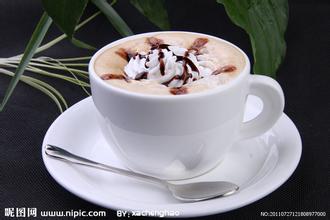Introduction to the characteristics of boutique coffee beans in Dominica Santo Domingo coffee producing area
On July 16, 1838, Juan Pablo Duvat and his colleagues established a
Dominica
Dominica
The secret society organization Trinity experience (La Trinitaria) aims to gain independence from the rule of Haiti. Soon after, Matthias Ramon Malia and Francisco del Rosario Sanchez joined the Trinity experience. All three were later called the founding fathers of the Dominican Republic. On February 27, 1844, the people of the Dominican Republic launched a war of independence against Haiti and declared the independence of the Dominican Republic at the same time. The constitution of the Dominican Republic, modelled on the Charter of the United States, was declared on November 6, 1844. In the decades after the success of its independence, the Dominican Republic experienced ups and downs in its domestic economy and politics, and was constantly attacked by neighboring Haiti from 1844 to 1856. During this period, it can be said that L'Or é al arrived in Santo Domingo in 1801. He abolished slavery on behalf of the French government. In 1802, Napoleon sent troops to conquer the whole island and ruled for several months. In October 1802, mixed-race and black people revolted against French rule and repelled the French army in 1803. On January 1, 1804, the rebels declared Santo Domingo independent and established the Republic of Haiti. But the defeated French still occupy the Santo Domingo area to the east. While the French invaded Spain in 1808, the rebels in Santo Domingo in the eastern part of the island received assistance from Britain and Haiti, which were allied with Spain at that time, and finally repelled French troops and made Santo Domingo a Spanish colony again.
In the early 18th century, coffee was introduced to Domiga from Martinique, and fine coffee was produced in the north represented by Hibao and in the south, including Okayabani Santo Domingo. Among them, the coffee produced by Santo Domingo and Barney, which is almost synonymous with domiga coffee, is a world-famous high-quality coffee. Santo Domingo coffee is characterized by freshness, elegance, fullness, excellent acidity and pleasant aroma, so it is worth it. The selection of Dominican coffee is usually done manually. The main basis for selection is according to the fullness of coffee particles, whether it is uniform, and then grade it. Generally speaking, coffee with full and uniform grains is easier to preserve. Only the fullest and most evenly grained coffee beans can be roasted to represent the best and finest coffee in the country.
Unlike coffee produced in Haiti, most of the coffee grown in the Dominican Republic has been washed, which is a symbol of high quality. Miniga Coffee uses a washing method to treat coffee beans, so that the quality of treated coffee beans is more guaranteed. The coffee beans treated by washing method retain more original flavor than the drying method, and the aroma is pure and soft.
The Dominican Republic is located in the east of the island of Haiti in the West Indies, bordering the Republic of Haiti to the west, the Atlantic Ocean to the north and the Caribbean Sea to the south. With an area of about 49000 square kilometers and a population of 7.1 million, the Dominican Republic and the Republic of Haiti coexist on an island bordering Haiti. Like its neighbours, the Dominican Republic had a history of revolution and poverty, but now it has democratic elections and the country is relatively stable.
In the early 18th century, coffee was introduced to Domiga from Martinique, and fine coffee was produced in the north represented by Hibao and in the south, including Okayabani Santo Domingo. Among them, the coffee produced by Santo Domingo and Barney, which is almost synonymous with domiga coffee, is a world-famous high-quality coffee. Santo Domingo coffee is characterized by freshness, elegance, fullness, excellent acidity and pleasant aroma, so it is worth it. The selection of Dominican coffee is usually done manually. The main basis for selection is according to the fullness of coffee particles, whether it is uniform, and then grade it. Generally speaking, coffee with full and uniform grains is easier to preserve. Only the fullest and most evenly grained coffee beans can be roasted to represent the best quality coffee in the country. Dominica coffee is grown in highlands and lowlands, and the taste is slightly different. The upland is sour, but the taste is rich; the lowland is less sour and tastes smoother. Boutique coffee has become popular in recent years. High-quality coffee beans produced by some Dominican estates have a rich aroma, mellow taste and moderately bright sour taste, which are not far from the more famous Puerto Rico beans or Jamaican beans, and are also worth tasting. Dominica coffee beans are mild in acidity and have a rich fruity flavor.
In the west of Hispaniola, the harvest in the mountains above 1500 meters above sea level, the rich coffee Republic of Dominica (Dominican Republic) is adjacent to Haiti, both of which own the island of Hispaniola (Hispaniola). The best place to produce is the Barahona region in the southwest, but Juncalito and Ocoa also produce a fine coffee, Santo Domingo coffee, which is characterized by freshness and elegance, fullness, excellent acidity and pleasant aroma, so it is worth it. Unlike coffee produced in Haiti, most of the coffee grown in the Dominican Republic has been washed, which is a symbol of high quality

Important Notice :
前街咖啡 FrontStreet Coffee has moved to new addredd:
FrontStreet Coffee Address: 315,Donghua East Road,GuangZhou
Tel:020 38364473
- Prev

Introduction to the characteristics of boutique coffee beans in Kilimanjaro coffee producing area of Tanzania
On January 12, 1964, the Sang people overthrew the sultan and founded the Zanzibar people's Republic. Tanganyika and Zanzibar formed a United Republic on April 26, 1964. On October 29 of the same year, the name of the country was changed to the United Republic of Tanzania. Julius Cambara Ginerere was the founding president and was re-elected twice until he resigned voluntarily in 1985. Mwinyi was elected on October 27th of the same year.
- Next

Costa Rican Yerzaro Coffee Flavor description introduction of fine coffee beans in the producing area
In the six general elections from 1953 to 1978, the National Liberation Party won four times. During its administration, the party emphasized state intervention in the economy, nationalization of some industries, increased import taxes to protect national industries, forced United fruit companies to increase income tax, strengthened relations with other Latin American countries and Western Europe, changed the situation of relying solely on the United States, joined the Central American Common Market in 1963, and became a member of the Central American Common Market for 70 years.
Related
- Detailed explanation of Jadeite planting Land in Panamanian Jadeite Manor introduction to the grading system of Jadeite competitive bidding, Red bid, Green bid and Rose Summer
- Story of Coffee planting in Brenka region of Costa Rica Stonehenge Manor anaerobic heavy honey treatment of flavor mouth
- What's on the barrel of Blue Mountain Coffee beans?
- Can American coffee also pull flowers? How to use hot American style to pull out a good-looking pattern?
- Can you make a cold extract with coffee beans? What is the right proportion for cold-extracted coffee formula?
- Indonesian PWN Gold Mandrine Coffee Origin Features Flavor How to Chong? Mandolin coffee is American.
- A brief introduction to the flavor characteristics of Brazilian yellow bourbon coffee beans
- What is the effect of different water quality on the flavor of cold-extracted coffee? What kind of water is best for brewing coffee?
- Why do you think of Rose Summer whenever you mention Panamanian coffee?
- Introduction to the characteristics of authentic blue mountain coffee bean producing areas? What is the CIB Coffee Authority in Jamaica?

